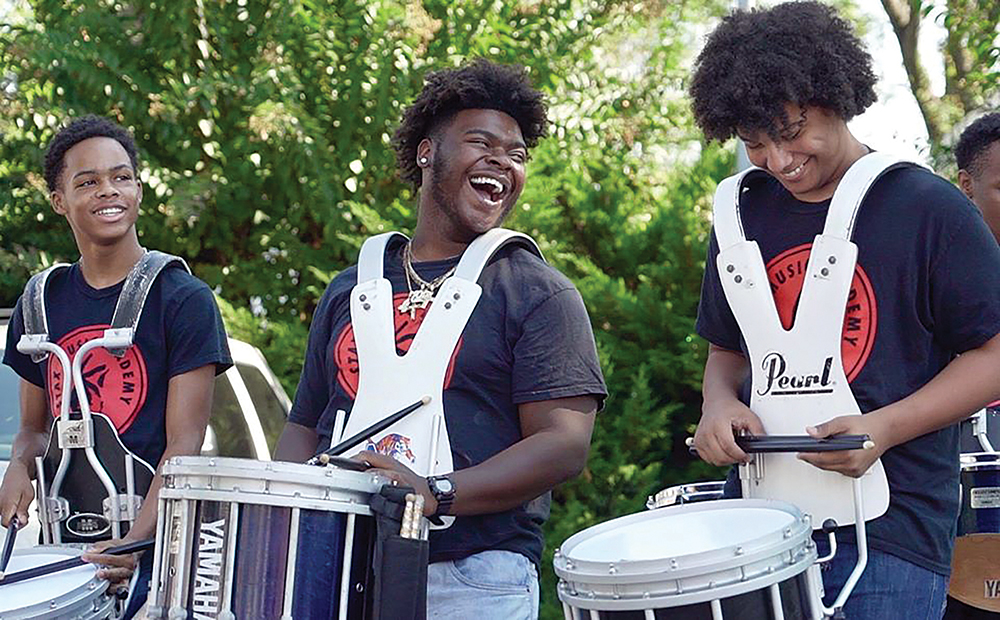We, as a city, have to create secure pathways for our young people to develop their talents, pursue aspirational careers in the creative economy, and secure Memphis’ rich cultural legacy into the future.
Often, when we think about Memphis’ cultural offerings, we’re stuck in the past and limited by how we define and value the city’s heritage. Memphis is known worldwide for its music, food, and culture, but we don’t always support the diverse array of makers, producers, dreamers, and thinkers pushing culture forward in Memphis and beyond. There is incredible untapped economic potential in the arts and cultural heritage sector. In order to unlock that potential, we must evolve the way we think about Memphis’ creative economy and what it encompasses, push for policies that provide better access to capital and capacity building for artists and creative entrepreneurs, and provide sustained funding for arts nonprofits and creative businesses. We must shift our policies and practices to lower barriers to cross-sector workforce development collaboration so that we can create stronger bridges from education to industry for young people interested in pursuing careers in the wide array of creative fields in Memphis.
In the days following the death of Tyre Nichols, images from his online photography catalog began to circulate online. Clicking through the beautiful photos, it is obvious and tragic to realize that he does not have a chance to develop his talent because his life was so cruelly stolen due to the atrocities committed against him. When we talk about the future of our city (and our city’s arts sector), we’re talking about young visionaries like Tyre. It’s vital that we resource organizations, spaces, and individuals who reflect our city’s arts and culture now — one day, they will be the leaders of the sector.
Last fall, the More for Memphis Arts & Culture Collaborative launched a survey to gather the voices of Memphis creatives — particularly Black creatives whose work fuels our city’s arts ecosystem — to get a better understanding of the challenges facing the sector. One of the key findings was that although the arts are a major economic driver for our city, the sector is critically under-resourced relative to the amount of tax revenue it generates. In 2019, the arts sector generated more than $8 million in revenue, but received just $2.02 in per capita funding — less than half of the national per capita average — for an ROI of 1,000 percent. What’s more, between 2018 and 2022, only 28.81 percent of the public funding for the arts in Shelby County, including pandemic relief funds, went to organizations led by people of color.
That lack of baseline investment makes it incredibly difficult for artists to make a living as creatives in Memphis. Survey respondents said that they struggle to make ends meet, often working multiple jobs and long hours to keep the lights on. It also impacts whether young people are able to see a place for themselves in Memphis’ creative economy. Young people are the lens through which we must vision a better, more equitable future for our sector and our city. This is where art starts in Memphis. In a city that is more than 60 percent Black, this is a racial justice issue. There is a disconnect between how we, as Memphians, view Memphis and how Memphis is sold to the world.
As part of the More for Memphis project, we are working to recenter Blackness at the heart of Memphis’ cultural heritage so that we can better define the contours of the arts and cultural heritage economy here in Memphis beyond music tourism and traditional, often white, mainstays that often derive from Black cultural forms. Memphis’ celebrated arts and cultural heritage economy should highlight important cultural and historical assets like the National Civil Rights Museum, Mason Temple, Hattiloo Theatre, and Collage Dance Collective, in addition to world-renowned assets like Sun Studio or Graceland. That starts on the grassroots level, with more support for organizations that are led by and serve Black and brown people, and more support for individual creators.
In addition to better supporting artists, we must also recognize and value creativity as an important workforce development skill in any field. The creative economy is made up of knowledge workers who possess critical thinking and design skills that transfer across all sectors, with overlaps in forward-looking fields like healthcare innovation, business technology, and advanced manufacturing. To be a competitive economy in the coming decades, we need people who can think outside of the box and who can adapt to new technology and new innovations — all traits of creative thinkers. We must equip our young people to be the foundation of a thriving, more equitable creative economy.
The arts and creative industries must no longer be left out of the economic and community development conversation. By developing economic and business development policy and practice to better support the needs of creatives, especially Black creatives and Black heritage sites, Memphis can begin to realize the full value of the arts as an underutilized economic asset.
Rychetta Watkins is the director of grantmaking and partnerships for Memphis Music Initiative. She is a passionate advocate for increased equity, access, and opportunity in education, the arts, and philanthropy in her hometown.
